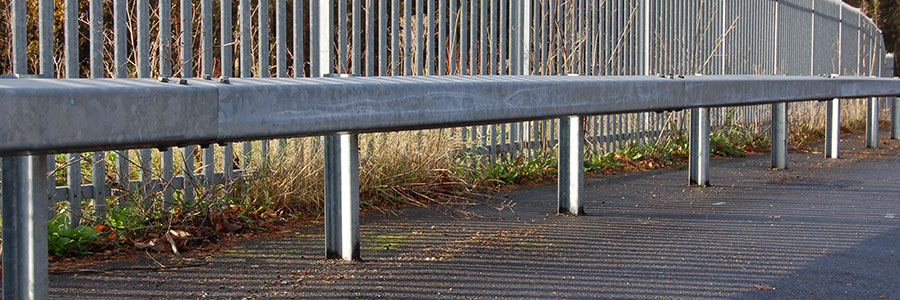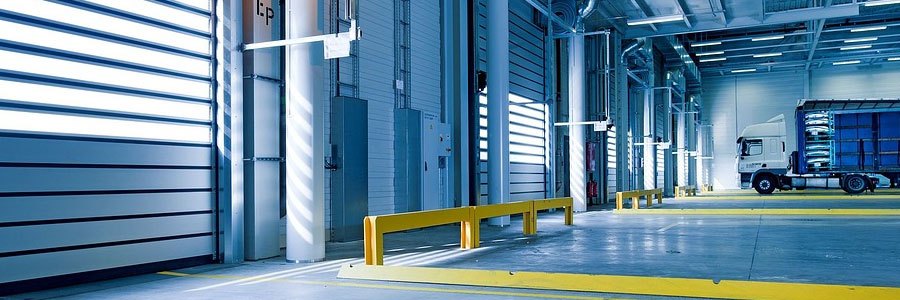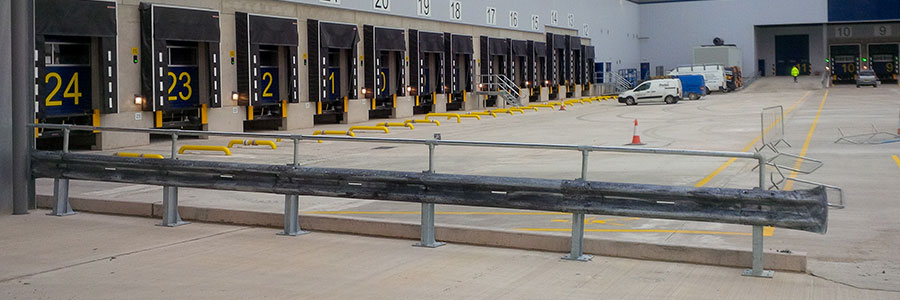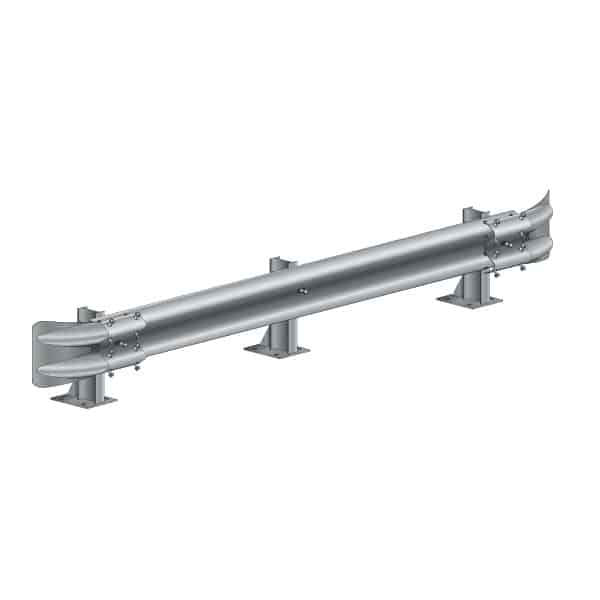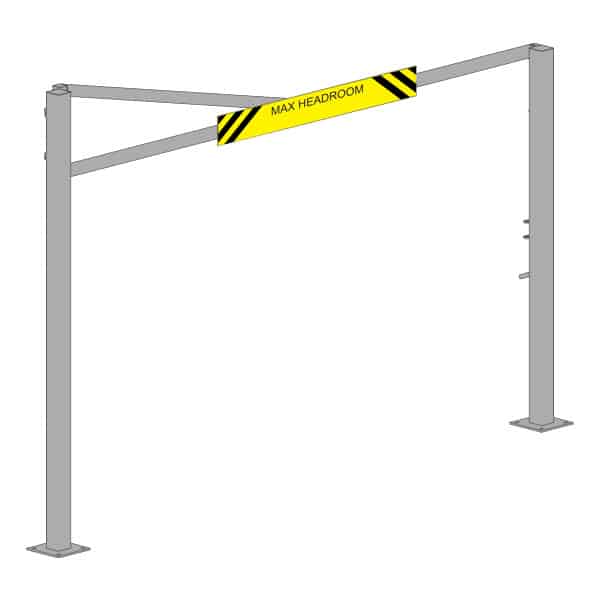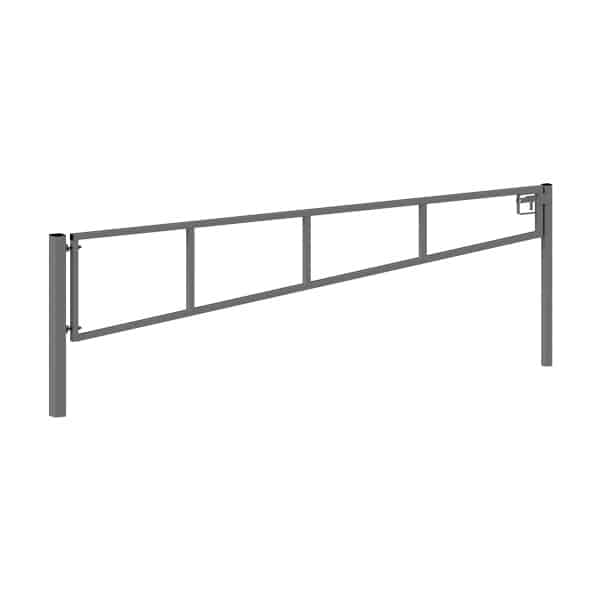Published:
Crash barriers play a pivotal role in ensuring the safety of motorists, pedestrians and workers in road infrastructure, construction sites, car parks, warehouses, and other spaces. But how exactly do crash barriers work?
As one of the UK’s leading security fencing companies, Alexandra Security is perfectly positioned to share everything you need to know about crash barriers, including their types, the mechanics behind how they work, and why they’re designed the way they are.
Types of Crash Barriers
Common types of crash barriers include W-beam, cable, and concrete barriers. Each of these is designed to address specific safety needs and road configurations, and offers different advantages in impact resistance and cost-effectiveness. Understanding the characteristics of each type is very useful for selecting the most suitable option for a given roadway or highway.
W-Beam Barriers
W-beam barriers, commonly made from steel or aluminium, are among the most prevalent crash barriers worldwide. They consist of a series of horizontally oriented beams supported by vertical posts, forming a continuous barrier along the roadside. W-beam barriers, like our Armco crash barriers, are highly effective at redirecting vehicles away from hazards and absorbing impact energy during collisions. Their flexibility and ease of installation make them well-suited for a wide range of road geometries and traffic conditions.
Cable Barriers
Cable barriers are an excellent alternative to traditional crash barriers. They’re made of high-tensile steel cables strung between sturdy support posts. Unlike rigid barriers, cable barriers are designed to flex upon impact, dissipating kinetic energy and reducing the risk of vehicle rollover. Cable barriers are particularly well-suited for medians and areas with limited clearance, offering effective containment while minimising the risk of secondary collisions.
Concrete Barriers
Concrete barriers offer unmatched strength and durability, providing robust protection against vehicle intrusions and roadside hazards. They’re also incredibly durable, requiring little to no maintenance over their lifetime. Concrete barriers typically feature precast concrete elements reinforced with steel or fibreglass, and are anchored to the ground to resist lateral forces. These types of barriers are commonly used in high-speed environments, where it’s imperative that cars cannot cross onto the opposite carriageway in the case of an accident.
The Two Main Functions of Crash Barriers
Crash barriers serve two primary functions: absorbing kinetic energy and redirecting vehicles away from potential hazards. By containing and redirecting errant vehicles, crash barriers help minimise the severity of accidents and reduce the risk of injuries or fatalities. This is achieved through a combination of structural integrity, energy-absorbing materials, and strategic placement along roadways. Here’s a closer look at how crash barriers do this:
1. Absorbing Kinetic Energy
When a vehicle collides with the crash barrier, it rapidly decelerates, converting kinetic energy into other forms – normally the deformation of the barrier. Crash barriers are engineered to absorb and dissipate this kinetic energy over a controlled distance, reducing the impact of forces exerted on the vehicle occupants. This energy absorption mechanism helps minimise the severity of collisions and reduces the risk of serious injuries or fatalities.
The ability of crash barriers to absorb kinetic energy depends on several factors, including the material composition, structural design, and installation method. Energy-absorbing materials, such as high-strength steel, aluminium alloys, or composite materials, are most commonly used in barrier construction, as these materials enhance impact resistance and deformation properties.
2. Redirecting Vehicles Away from Hazards
Crash barriers are strategically positioned along roadways to redirect errant vehicles from potential hazards, such as oncoming traffic, roadside obstacles, or steep embankments. By creating a physical barrier between vehicles and hazards, crash barriers help prevent vehicles from crossing into opposing lanes, colliding with roadside structures, or rolling over into adjacent terrain.
Various factors, including barrier height, length, and placement, influence the effectiveness of crash barriers in redirecting vehicles. The barrier height is also carefully considered to ensure adequate vehicle containment while minimising the risk of vehicle override or underride.
Barrier length must provide enough lateral deflection and guidance to redirect vehicles back onto the roadway or toward designated safe areas. Strategic placement of crash barriers at critical locations, such as curves, intersections and bridge approaches, enhances their ability to mitigate the consequences of driver errors or vehicle malfunctions.
Designing Road Safety Barriers
Many factors, including road geometry, traffic volume, and environmental conditions influence the design of crash barriers. Engineers must carefully assess these variables to determine a location’s optimal barrier type, height, and length.
Additionally, compliance with industry standards and regulations ensures the effectiveness and safety of crash barrier installations. Here’s a few things engineers need to consider when designing crash barriers:
Road Geometry
The geometric characteristics of the roadway, including curvature, gradient, and alignment, play a crucial role in determining the design of crash barriers. Sharp curves, steep slopes, and narrow lanes pose unique challenges that must be addressed to ensure adequate containment and redirection of errant vehicles.
Traffic Volume
High-speed highways with heavy traffic flow require particularly robust barrier systems capable of withstanding significant impact. On the other hand, low-speed urban streets may necessitate lighter-duty barriers that prioritise pedestrian safety and aesthetics. The design of crash barriers must strike a balance between traffic safety needs and practical constraints imposed by traffic volume and flow.
Environmental Conditions
Environmental factors, such as weather patterns, temperature extremes, and exposure to corrosive agents, can impact the performance and longevity of crash barriers. Barrier materials should be selected and treated to withstand adverse environmental conditions and maintain structural integrity over time. At Alexandra Security, our barriers are galvanised and can be powder-coated for extra weather protection.
Compliance With Standards and Regulations
Adherence to industry standards and UK regulatory requirements is paramount to ensuring the effectiveness and safety of crash barrier installations. Engineers stay abreast of relevant standards and guidelines to ensure compliance with established design criteria and performance specifications. Failure to meet regulatory standards can compromise the effectiveness of crash barriers and expose transportation agencies to liability risks.
Safety Barrier Installation – The Process
Installing road barriers generally involves a meticulous process that begins with site assessments and planning. Once the design specifications are finalised, construction crews proceed with foundation preparation, barrier assembly, and installation. Quality control measures, such as testing and inspection, are conducted to verify the integrity and effectiveness of the barriers before they are put into service.
Do You Need Road Safety Barriers?
Crash barriers are a vital component of road safety infrastructure, protecting lives and minimising the impact of accidents on our roadways. By understanding the mechanics behind crash barriers and implementing best practices in their design, installation, and maintenance, we can continue improving the safety of our transportation networks for generations to come.
To invest in crash barriers, whether for construction sites, traffic management or car parks, get in touch with us today at 01892 833 001. We’ll be happy to discuss your security needs and assist you in finding the best solution.



